Birds are a common sight in Tokyo, Japan. The city is home to several types of birds, from the majestic swans to the smaller yet colorful warblers. Each of these birds has their own distinct characteristics and habits, making them fascinating to observe.
This city provides a unique opportunity for bird watching and experiencing nature amidst the urban landscape.
In this article, we will explore the different species of birds found in Tokyo, giving insight into their habitats, behaviors, and significance to the city’s ecosystem.
Join us on this journey into the world of Tokyo’s feathered residents.
1. Crested Ibis
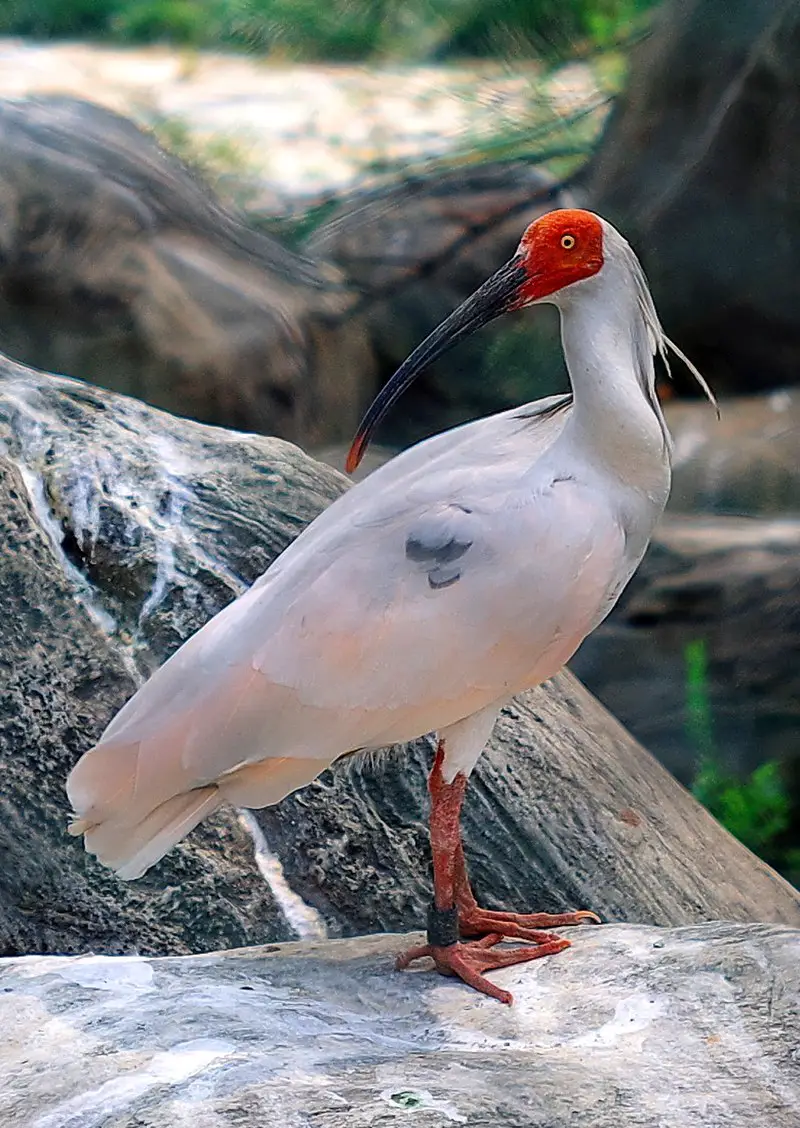
The Crested Ibis is a large white-plumaged bird that can grow up to 78.5 cm in length. It has red skin on its partially bare head, and sports a dense crest of white plumes on the nape which makes it easily identifiable from other species of ibises.
Native to eastern Asia, they inhabit pine forests and build their nests at the tops of trees. They mainly feed on frogs, insects, small rodents and fish but have also been known for scavenging carrion occasionally.
When food is scarce during winter months or drought conditions. In recent decades due to various environmental factors like loss of habitat.
Destruction as well as illegal hunting by humans; this species has faced severe decline in population numbers making it vulnerable to extinction if protection measures are not taken soon enoughScientific classification:
| Kingdom | Animalia |
| Phylum | Chordata |
| Class | Aves |
| Order | Pelecaniformes |
| Family | Threskiornithidae |
| Genus | Nipponia Reichenbach, 1850 |
| Species | N. nippon |
Also Featured In: Most Common Birds in China,
2. Black Kite
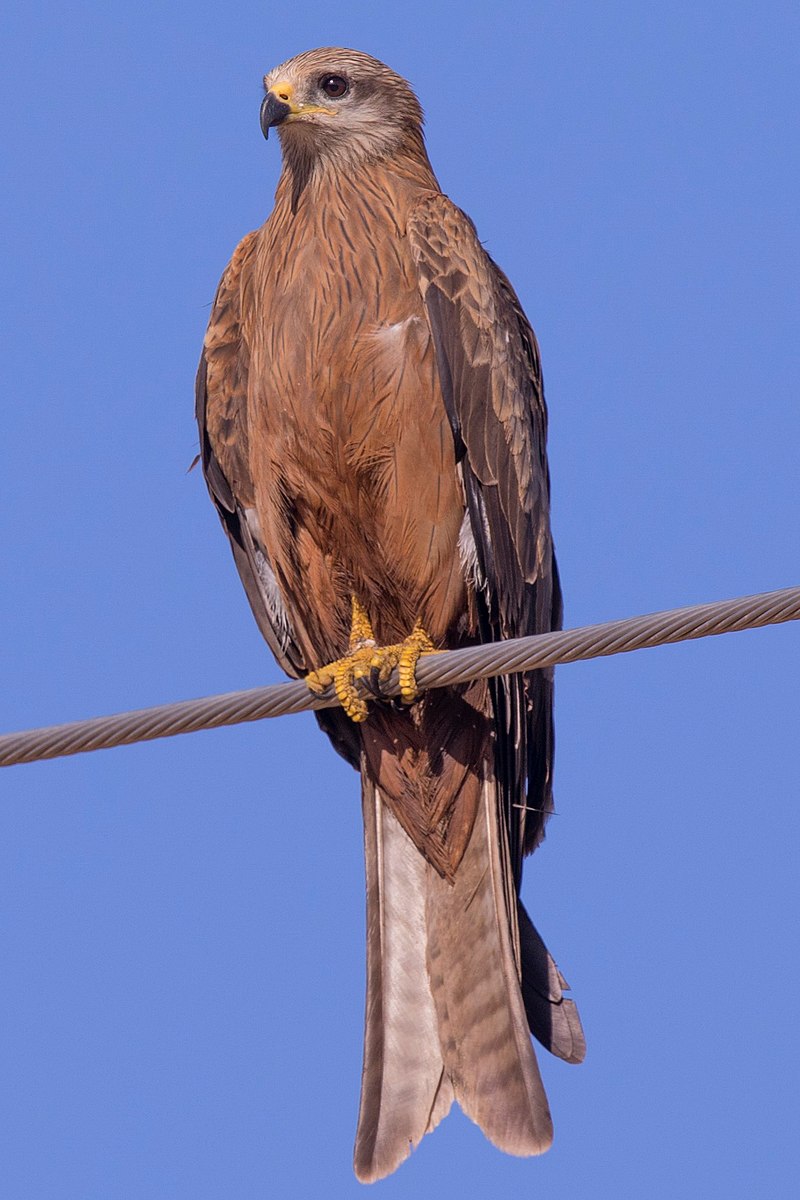
The black kite is one of the most abundant species of diurnal birds of prey in the world, with a global population estimated to be up to 6 million individuals.
It belongs to the family Accipitridae and has medium-sized body size. The wingspan can range from 150 cm – 180cm wide.
They have dark brown feathers on their back and light brown or grey underparts and long forked tails that help it maneuver through.
Its environment while hunting for food like insects, small mammals, reptiles etc., along with scavenging opportunities when available.
Black Kites are found across several continents including Europe, Africa, Asia Minor & Australia where they breed during spring in nests made among trees near wetlands or riversides;
migratory populations move southward away from winter cold temperatures as far east as India & Japan before returning home again next season.Scientific classification:
| Kingdom | Animalia |
| Phylum | Chordata |
| Class | Aves |
| Order | Accipitriformes |
| Family | Accipitridae |
| Genus | Milvus |
| Species | M. migrans |
Also Featured In: Common Birds in India, Common Birds in the Cities
3. Falcated Duck
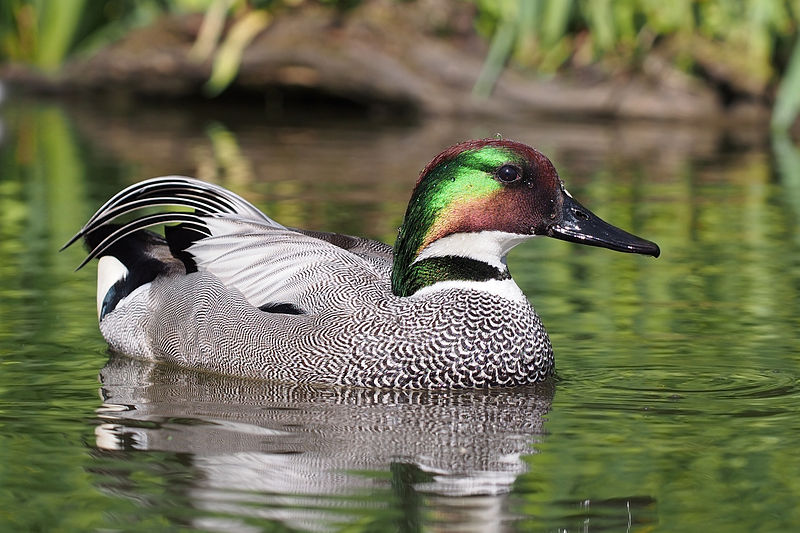
The Falcated Duck is a beautiful species of dabbling duck native to the east Palearctic region. It has a close relationship with both gadwall and wigeons, leading some researchers to assign it its own genus called Mareca in 2009.
The bird stands at approximately 20-25 inches tall and features an orange bill, dark brown head, speckled white/brown body feathers, long tail feathers that are folded up like fans (this gives them their name), yellow legs and feet as well as black eyes.
This majestic creature can be found inhabiting wetlands such as lakes or ponds around East Siberia through North Japan.
During winter months they migrate further south towards India in search of food sources during colder climates. All these characteristics make the Falcated Duck one of nature’s most beautiful works.Scientific classification:
| Kingdom | Animalia |
| Phylum | Chordata |
| Class | Aves |
| Order | Anseriformes |
| Family | Anatidae |
| Genus | Mareca |
| Species | M. falcata |
4. Oriental Turtle Dove
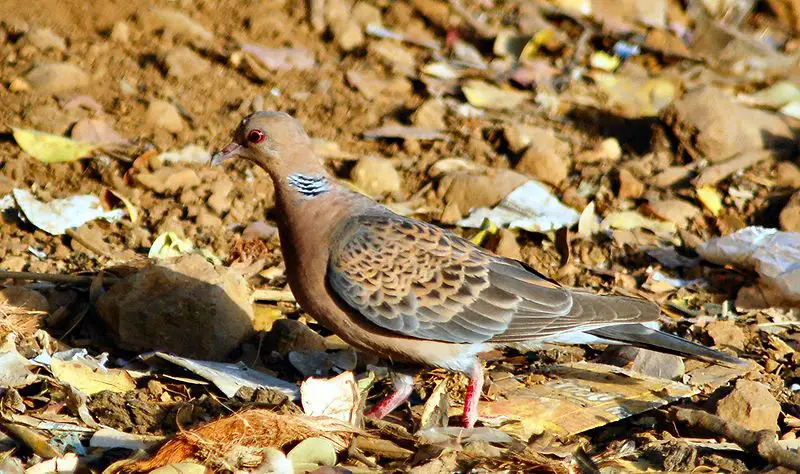
The Oriental turtle dove is a member of the Columbidae bird family and has an extensive range, from Europe to Japan. It can be identified by its rufous plumage with variations in patterning among different subspecies.
During winter, populations at higher latitudes migrate south for warmer climes. When courting, males display cooing or hooting sounds and perform flight displays that consist of circular glides followed by dives towards their female counterparts.
They feed on grains as well as fruits such as olives and figs when these are available seasonally.
The nests are typically located in trees or bushes near water sources where they lay two white eggs which hatch after 14 days of incubation period shared between both parentsScientific classification:
| Kingdom | Animalia |
| Phylum | Chordata |
| Class | Aves |
| Order | Columbiformes |
| Family | Columbidae |
| Genus | Streptopelia |
| Species | S. orientalis |
Also Featured In: Common Birds in Japan, Native Birds Of Kuchinoerabu Island
5. Japanese Pygmy Woodpecker
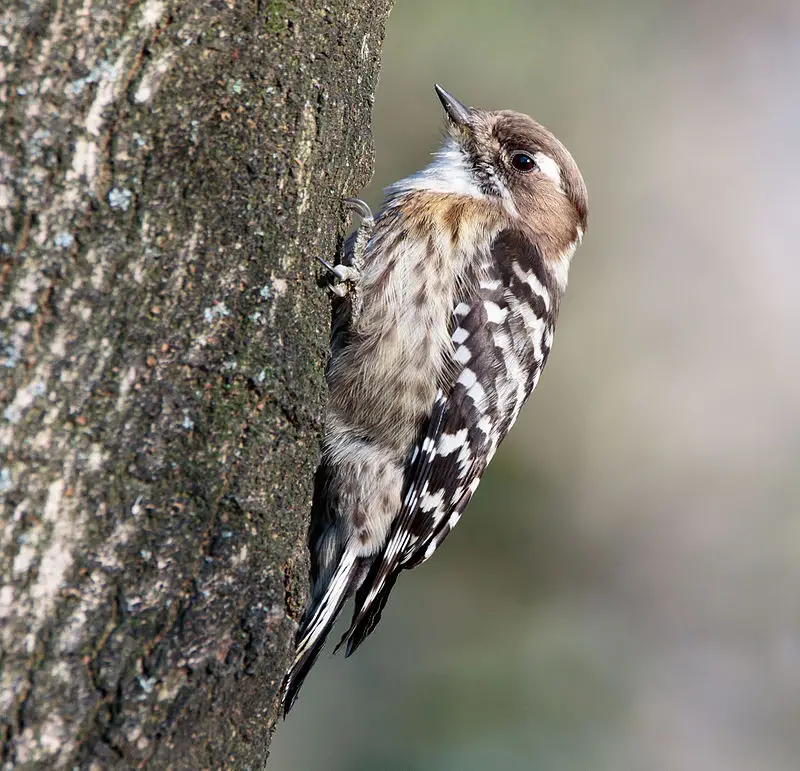
The Japanese pygmy woodpecker (Yungipicus kizuki) is a small species of woodpecker found in forests in Russia, China, Korea and Japan. It was first described by Temminck back in the 1800s.
This bird generally lives within coniferous or deciduous trees and primarily feeds on insects like ants that it finds under bark or on dead branches.
Its plumage consists mainly of black wings with white patches along its shoulder as well as an orange-red crown to differentiate males from females which lack this trait.
The International Union for Conservation of Nature has assessed this species as least concern due to their wide range across several countries.
They are quite common though rarely seen outside heavily forested areas due to their size and natural shyness around peopleScientific classification:
| Kingdom | Animalia |
| Phylum | Chordata |
| Class | Aves |
| Order | Piciformes |
| Family | Picidae |
| Genus | Yungipicus |
| Species | Y. kizuki |
Also Featured In: Birds of Hyōgo,
6. Grey Heron
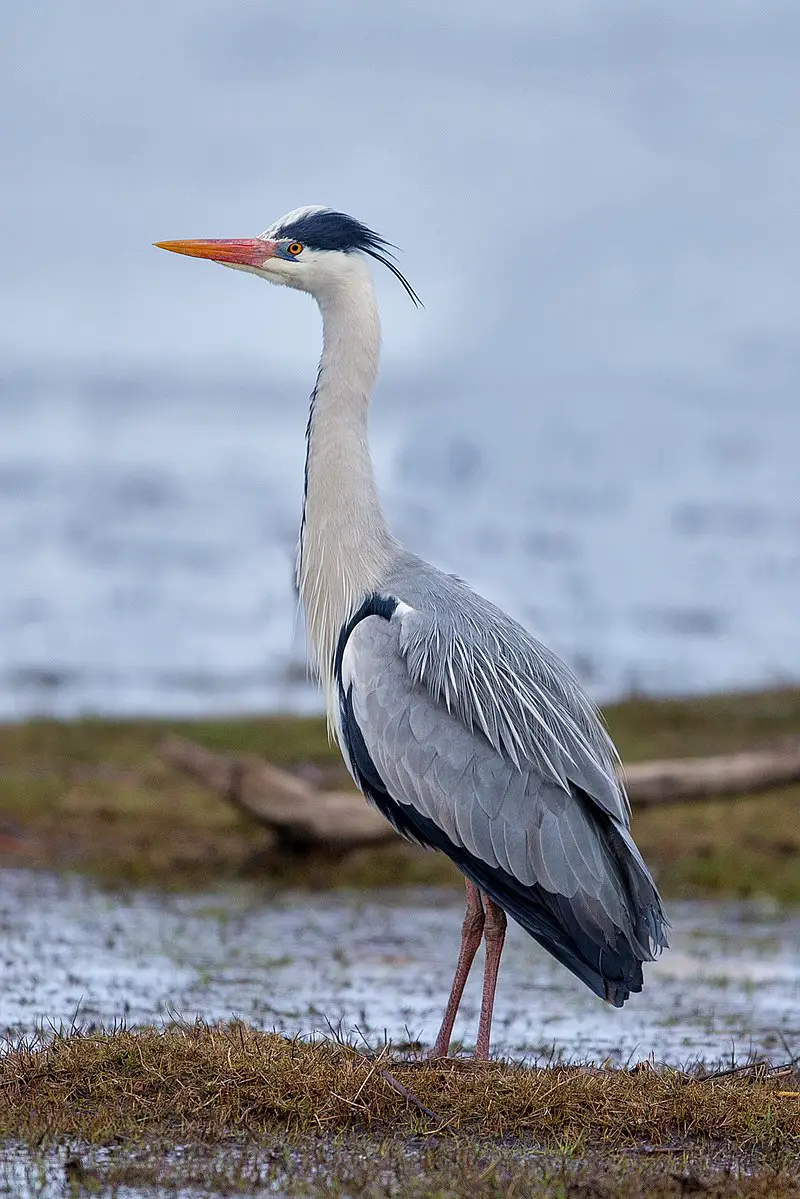
The grey heron is a majestic bird found in temperate regions of Europe, Asia and parts of Africa. It has long legs to wade through the shallow waters where it feeds on aquatic creatures such as frogs, fish and insects.
In wintertime some migrate southwards but others stay put in their natural habitats; lakes, rivers and marshes. They can also be spotted near coasts or along estuaries.
Grey Herons have beautiful blue-grey feathers and an impressive wingspan that makes them stand out from other birds when they soar gracefully across the sky.
These graceful creatures are not only easy on the eye but wise hunters too.Scientific classification:
| Kingdom | Animalia |
| Phylum | Chordata |
| Class | Aves |
| Order | Pelecaniformes |
| Family | Ardeidae |
| Genus | Ardea |
| Species | A. cinerea |
Also Featured In: Most Common Romanian Birds, Common Serbian Birds
7. Black-Faced Spoonbill
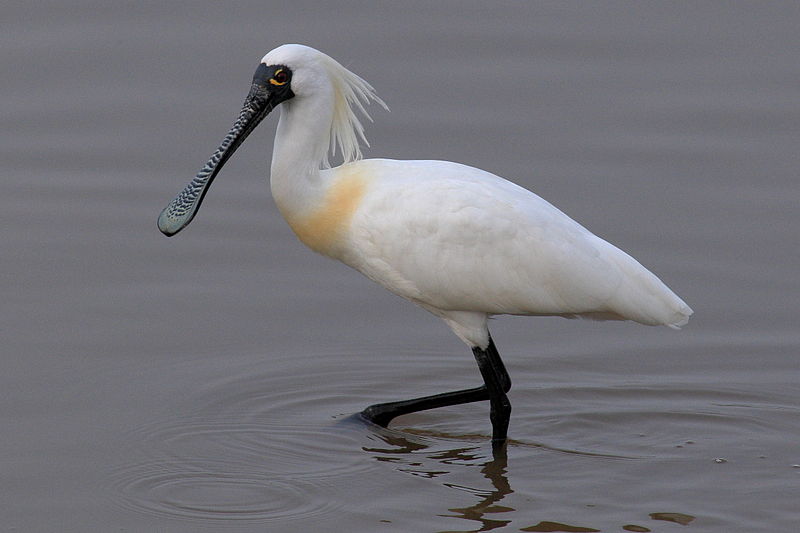
The Black-faced Spoonbill is a rare and endangered species of wading bird, found in eastern Asia.
It has unique physical characteristics like its dorso-ventrally flattened bill which it uses to feed by touch.
They are large birds with white feathers, black face, neck and wings and yellow crowns on their heads.
These solitary birds spend most of the year near coastal wetlands or along tidal mudflats where they search for food such as fish, crustaceans and molluscs using their long beaks to dig into the sand or water vegetation.
Conservation efforts such as creating safe habitats have helped this species survive despite its rarity but more needs to be done if we hope to save them from extinction.Scientific classification:
| Kingdom | Animalia |
| Phylum | Chordata |
| Class | Aves |
| Order | Pelecaniformes |
| Family | Threskiornithidae |
| Genus | Platalea |
| Species | P. minor |
Also Featured In: Most Common Taiwan Birds, Hong Kong Birds You Need to See
8. Little Ringed Plover
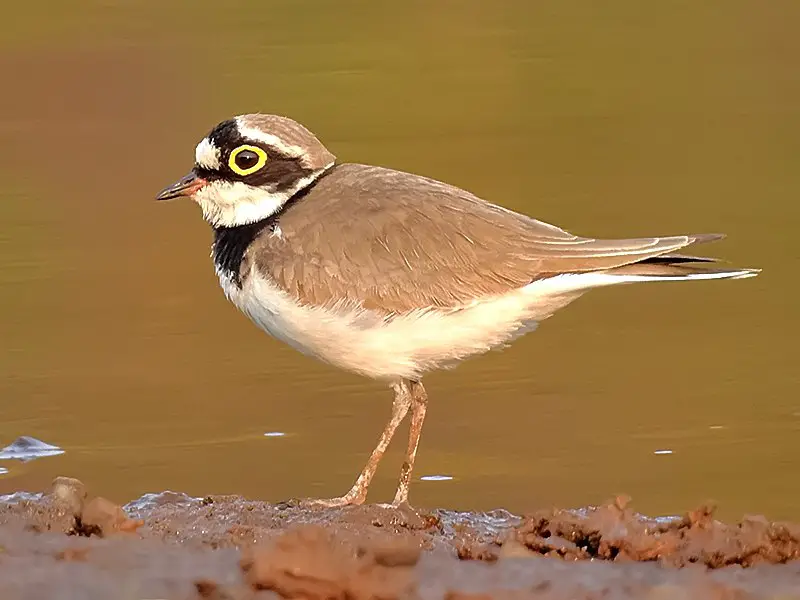
The Little ringed plover is a small species of bird from the genus Charadrius. It has been given its scientific name due to an uncertain origin and yellowish colouring, which was first noted in the fourth century Vulgate Bible.
Native to river valleys across Europe and parts of Asia, this wader prefers areas with soft ground where it can feed on insects or worms.
Its plumage consists mainly of brown tones but during breeding season males will develop a black breast band for courtship displays.
These birds construct shallow nests near waterbodies using pebbles found nearby as well as vegetation such as grasses and mosses to provide camouflage from predators.
The female typically lays three eggs at one time that are incubated by both parents until they hatch after around three weeks before fledging shortly afterwards.Scientific classification:
| Kingdom | Animalia |
| Phylum | Chordata |
| Class | Aves |
| Order | Charadriiformes |
| Family | Charadriidae |
| Genus | Charadrius |
| Species | C. dubius |
Also Featured In: Common Birds of Portugal, Most Common Birds Live in Osaka
9. Large-Billed Crow
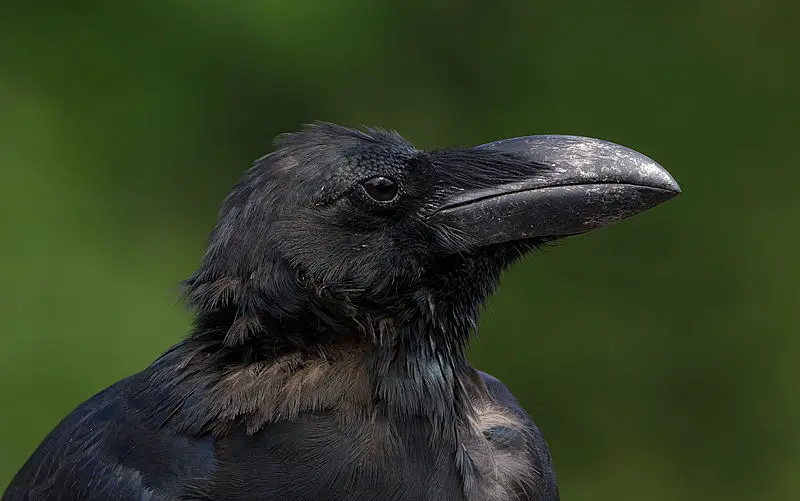
The Large-billed Crow, also known as Jungle Crow, is a species of crow found throughout Asia. It has adapted to many different food sources and can easily colonize new areas due to its resilience.
This makes it an unwelcome presence in some places, particularly islands where the bird’s numbers can quickly get out of control.
The name macrorhynchos comes from its large bill which sets it apart from other crows living in the same area; this bill helps them break open hard shells or tough skinned fruits with ease.
They have glossy black feathers over their bodies and yellow eyes that make them look very imposing when seen up close.Scientific classification:
| Kingdom | Animalia |
| Phylum | Chordata |
| Class | Aves |
| Order | Passeriformes |
| Family | Corvidae |
| Genus | Corvus |
| Species | C. macrorhynchos |
Also Featured In: Gujarati Birds,
10. Little Egret
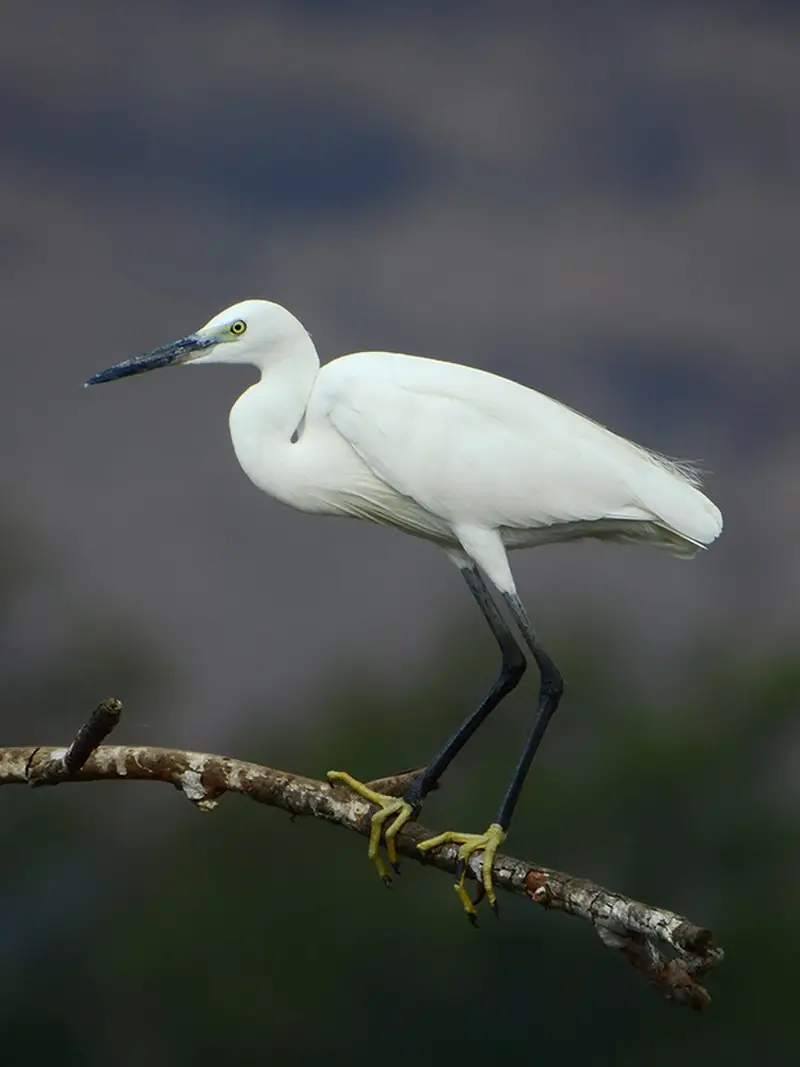
The Little Egret is a small white heron with sleek black beak, long black legs and in some cases yellow feet.
It can be found near aquatic areas where it feeds on molluscs, amphibians and insects while also occasionally feeding of land creatures such as lizards or rodents.
Breeding seasonally they make platform nests of sticks being built either by themselves or in colonies alongside other water birds.
They are widely distributed across the world from Europe to Africa, Asia to Australia making them an easily recognisable bird species often seen at waterside locations searching for their next meal.Scientific classification:
| Kingdom | Animalia |
| Phylum | Chordata |
| Class | Aves |
| Order | Pelecaniformes |
| Family | Ardeidae |
| Genus | Egretta |
| Species | E. garzetta |
Also Featured In: Egyptian Birds, Swamps Birds You Should Know
11. Common Greenshank
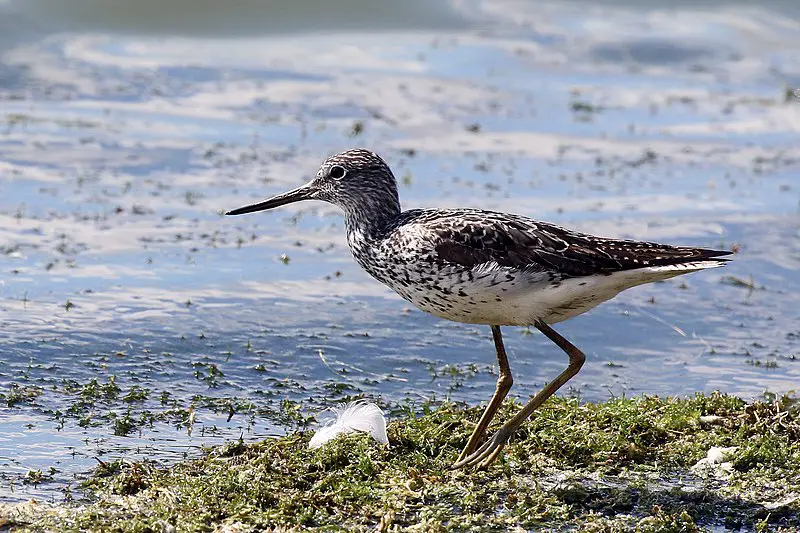
The Common Greenshank is a type of wader, belonging to the large family Scolopacidae. It’s name originates from Aldrovandus in 1599, and references Aristotle’s ancient Greek work which mentions a thrush-sized bird with white rump and tail bobbing.
Its scientific name “nebularia” actually means mist. This small bird can be found near wetlands or marshes throughout Europe and Asia – it has even been spotted as far south as Africa.
They are known for their long legs that allow them to easily traverse shallow water while searching for food like insects, crustaceans, mollusks or worms.
The Common Greenshank is an interesting species whose beauty should not go unnoticed by any nature enthusiast.Scientific classification:
| Kingdom | Animalia |
| Phylum | Chordata |
| Class | Aves |
| Order | Charadriiformes |
| Family | Scolopacidae |
| Genus | Tringa |
| Species | T. nebularia |
Also Featured In: Common Estonian Birds, Fuerteventura Island Birds You Need to See
12. Common Snipe
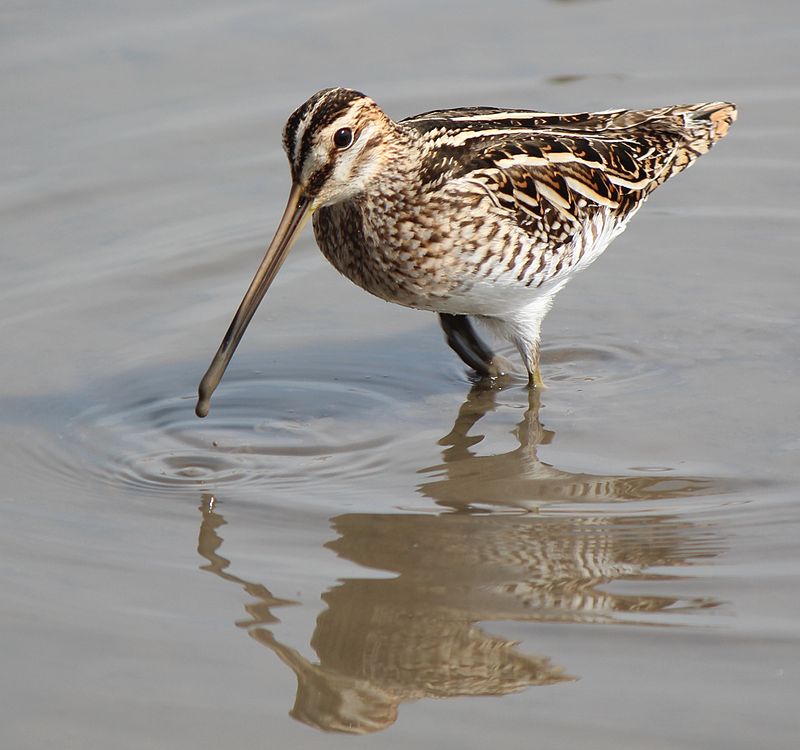
The Common Snipe is a small wader bird that can be found throughout the Palearctic region, from Iceland to northern Russia and Siberia. It breeds in marshes, bogs, tundra and wet meadows during summertime.
Its diet consists of earthworms and insects which it finds by probing with its long bill into soft ground.
During winter months they migrate southwards in search of more favourable conditions for breeding; however their exact migration routes remain unknown.
These birds are fairly secretive but can often be seen skulking around wetlands using their cryptic mottled brown plumage as camouflage against predators.
They have an unmistakable flight pattern – rapid bursts of wing-beats interspersed with glides – making them one of the most distinctive species on our planet.Scientific classification:
| Kingdom | Animalia |
| Phylum | Chordata |
| Class | Aves |
| Order | Charadriiformes |
| Family | Scolopacidae |
| Genus | Gallinago |
| Species | G. gallinago |
Also Featured In: Native Birds Of Germany, Belarus Birds You Should Know
13. Black-Headed Gull
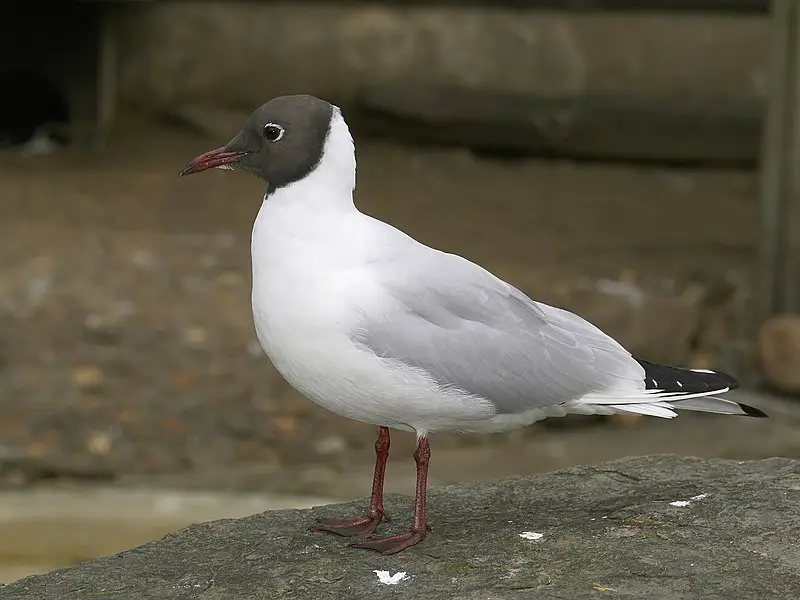
The Black-headed Gull is a small, migratory bird found in much of the Palearctic. It breeds mainly in Europe and coastal eastern Canada but can also be found further west in milder areas.
In North America it’s known as the Common Black-headed Gull.
Its plumage consists of grey on top with white underneath, while its head has a distinctive black cap during breeding season which fades to brown outside of this period.
They are often seen by coastlines or near inland waters where they feed off fish, insects and crustaceans caught either from the surface or underwater depending on their preference at that time.Scientific classification:
| Kingdom | Animalia |
| Phylum | Chordata |
| Class | Aves |
| Order | Charadriiformes |
| Family | Laridae |
| Genus | Chroicocephalus |
| Species | C. ridibundus |
Also Featured In: Birds of United Kingdom, Flight Birds You Should Know
14. Eurasian Teal
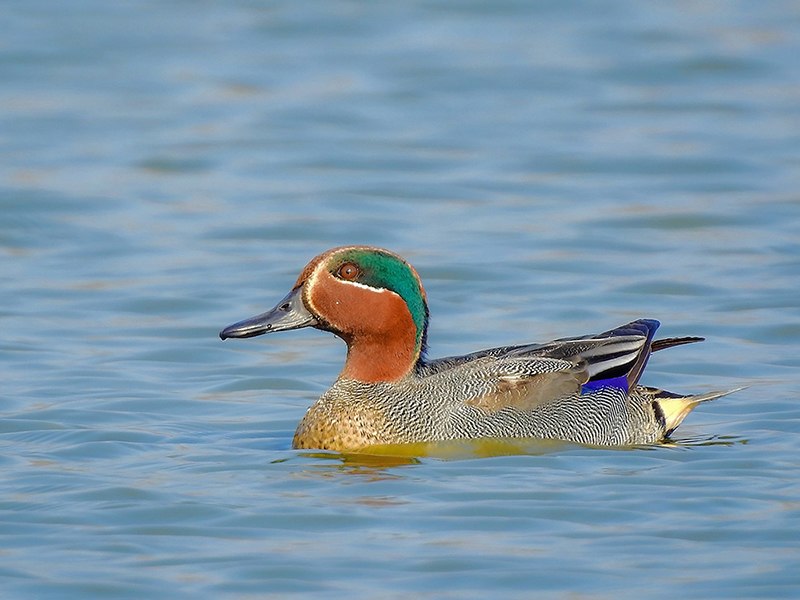
The Eurasian teal, also known as the common teal or the Eurasian green-winged teal, is a small dabbling duck that inhabits temperate Europe and Asia.
It has an unmistakable blue-green colouring which gives it its name.
During winter months they migrate south in large flocks to areas with warmer climates where there is more food available for them to feed on.
The Eurasian Teals are highly social birds; they often congregate in groups of hundreds or even thousands during migration periods.
They mostly feed on aquatic vegetation such as grasses and weeds but will occasionally hunt insects too.
These ducks make beautiful sights when flying over lakes or streams, their wings producing a distinctive whistling sound while they glide across the sky.Scientific classification:
| Kingdom | Animalia |
| Phylum | Chordata |
| Class | Aves |
| Order | Anseriformes |
| Family | Anatidae |
| Genus | Anas |
| Species | A. crecca |
Also Featured In: Flocks Birds around Us, British Columbian Birds
15. Common Pochard
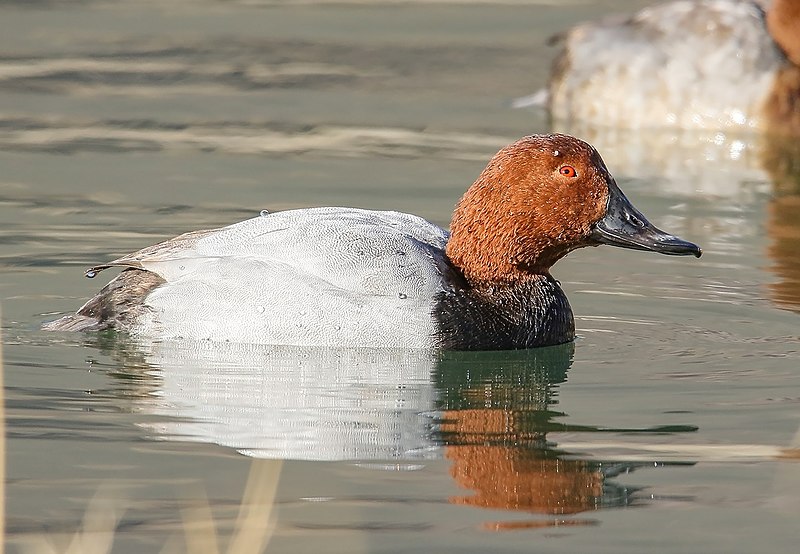
The Common Pochard is a medium-sized diving duck found across Eurasia and North Africa. It has distinctive features such as a long, dark bill with a grey band, red head and neck, black breast, red eyes and grey back.
The female has similar characteristics but her head is more brown/grey in colour than the male’s striking red hue.
They are often seen swimming together in large flocks near freshwater bodies or on lakes to feed on aquatic plants like seeds of waterlilies etc., which makes them an important part of the ecosystem by helping disperse plant species.
Their loud call can be heard over vast distances making them easy to spot even when they’re far away.Scientific classification:
| Kingdom | Animalia |
| Phylum | Chordata |
| Class | Aves |
| Order | Anseriformes |
| Family | Anatidae |
| Genus | Aythya |
| Species | A. ferina |
Also Featured In: Common Birds in Saudi Arabian, Native Birds of Kazakhstan
16. Black-Tailed Godwit
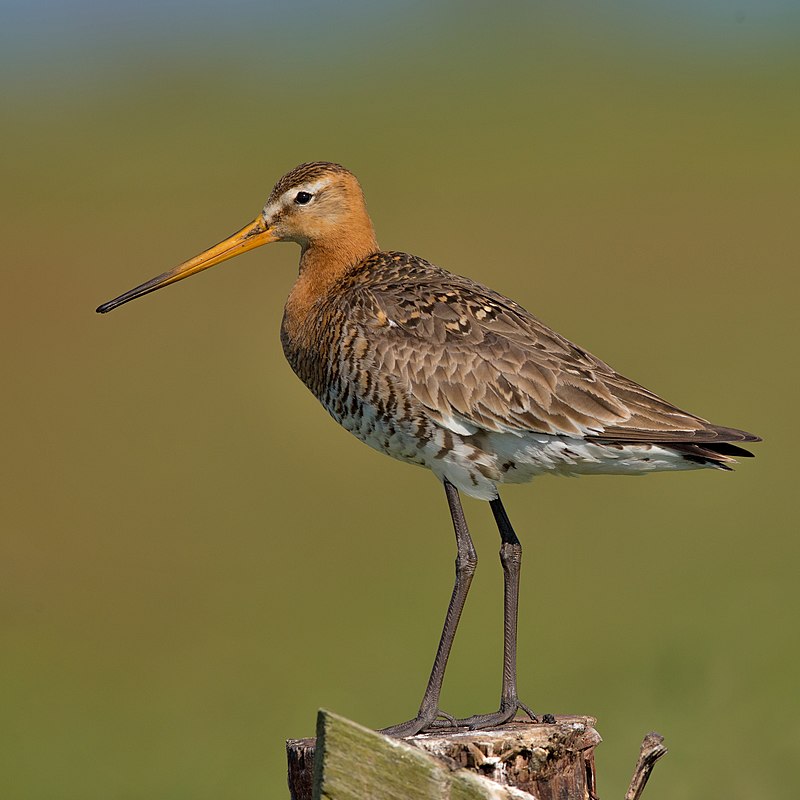
The Black-tailed Godwit is a species of large shorebird that was first described by Carl Linnaeus in 1758.
These beautiful birds have an orange head, neck and chest during breeding season while they turn to grey-brown coloration in winter.
They are easily identifiable due their black and white wingbar throughout the year. As for its habitat, these godwits breed mostly on Iceland but also across Europe, eastward through Asia Minor all the way to Mongolia; some even winter further south in Africa or India.
The Godwit has adapted well to human presence as it can be found close to wetlands near farms or villages where plenty of food is available from ploughed fields.
It’s really amazing how such a majestic bird with colorful plumage manages so successfully at this day and age.Scientific classification:
| Kingdom | Animalia |
| Phylum | Chordata |
| Class | Aves |
| Order | Charadriiformes |
| Family | Scolopacidae |
| Genus | Limosa |
| Species | L. limosa |
Also Featured In: Birds in Sri Lanka, Common Slovakian Birds
17. Tufted Duck
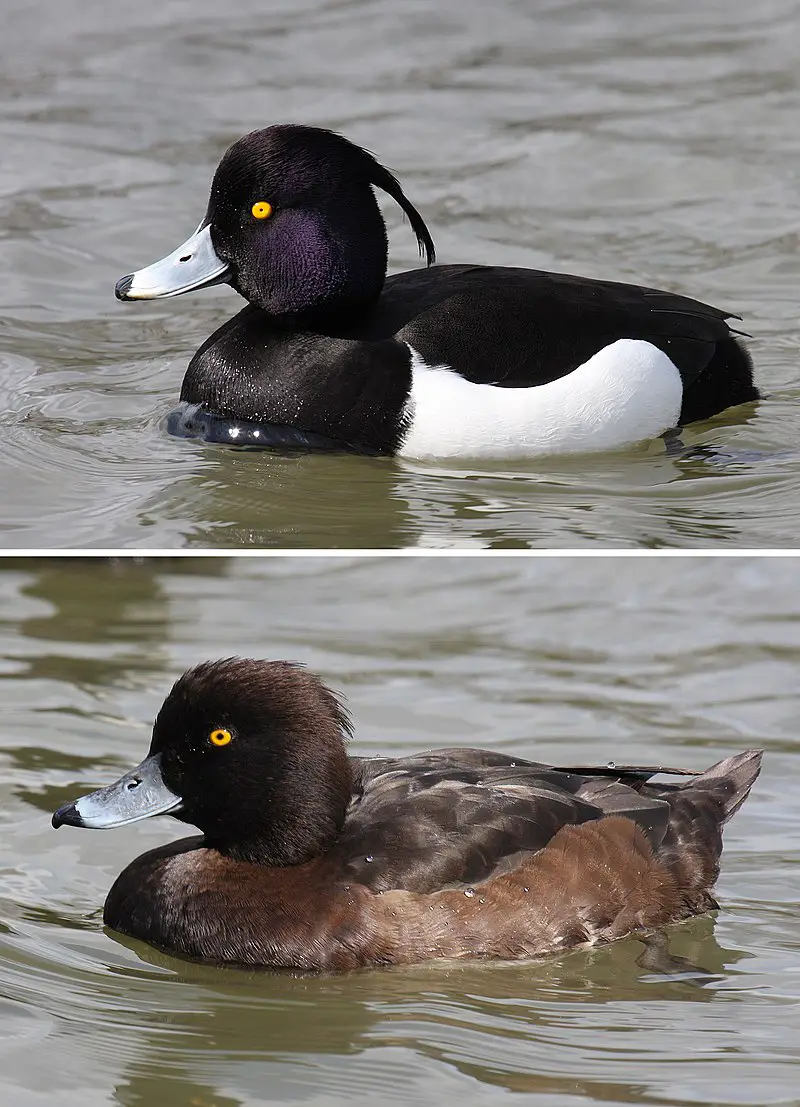
The Tufted Duck is a small diving duck which can be found in northern Eurasia, with an estimated population of nearly one million. It gets its scientific name from Ancient Greek and Latin words meaning “sooty throat”.
The adult male has black plumage except for white flanks and a blue-grey bill. Its head is also adorned by the distinctive tufts that give it its common name.
Females are brownish grey on their upper parts and have paler underparts than males as well as having orange bills instead of blue-grey ones like their male counterparts.
This species feed mainly on aquatic plants but will occasionally eat molluscs, crustaceans, insects or worms when they’re available too.
They are generally quite shy birds so keep your distance if you spot them while out in nature to avoid disturbing them unnecessarilyScientific classification:
| Kingdom | Animalia |
| Phylum | Chordata |
| Class | Aves |
| Order | Anseriformes |
| Family | Anatidae |
| Genus | Aythya |
| Species | A. fuligula |
Also Featured In: Kuwait Birds, East African Birds
18. Little Grebe
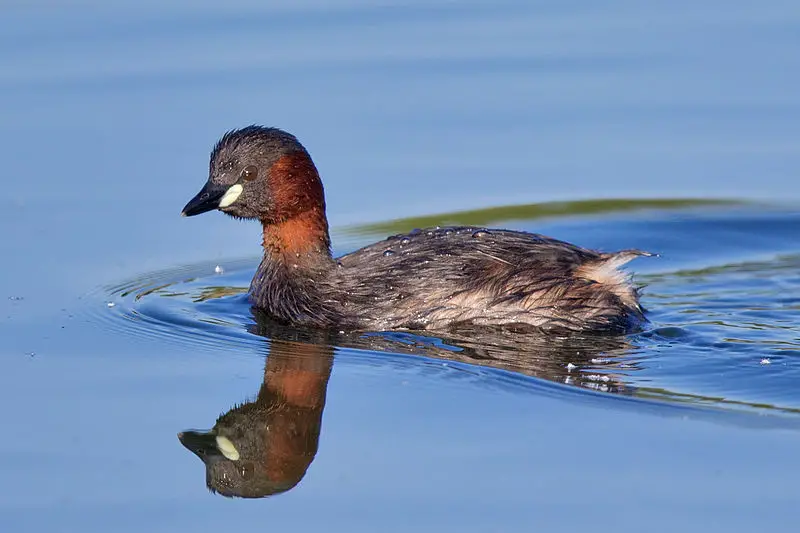
The little grebe, also known as dabchick, belongs to the grebe family and is a small water bird. It gets its genus name from the Ancient Greek words for ‘fast’ and ‘to sink under’.
The specific name ruficollis means ‘red-necked’ in Latin. With a length of 23 to 29 centimetres, it is the smallest member of the grebe family.Scientific classification:
| Kingdom | Animalia |
| Phylum | Chordata |
| Class | Aves |
| Order | Podicipediformes |
| Family | Podicipedidae |
| Genus | Tachybaptus |
| Species | T. ruficollis |
Also Featured In: Turkey Birds You Should Know, Italian Birds You Should Know
19. Northern Pintail
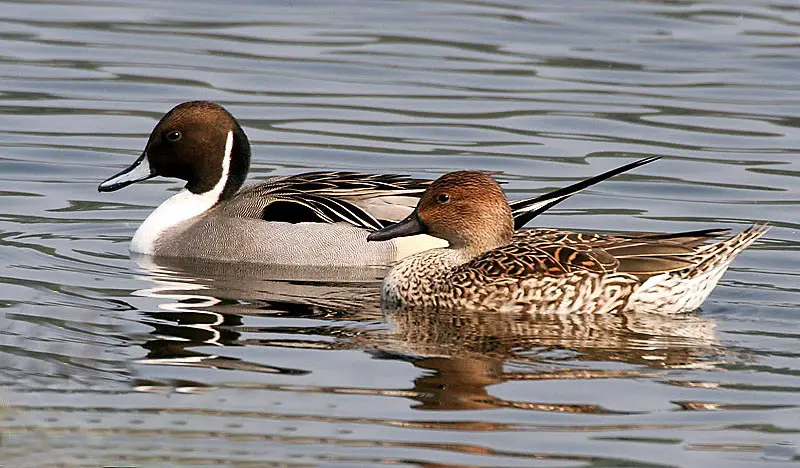
The Northern Pintail is a widespread duck species that breeds in northern parts of Europe, across the Palearctic and North America. This migratory bird winters south of its breeding range to the equator.
Unlike most birds with such a wide range, it does not have any subspecies. The male Northern Pintail has a distinctive long, thin tail and a chocolate-brown head. The female has a mottled brown body and a shorter tail.
This duck species prefers shallow wetlands or marshes for breeding and feeds on aquatic plants and insects.
The Northern Pintail is a highly migratory bird, covering great distances in search of suitable habitats.
Despite some threats, this species is not considered globally threatened, although certain populations are experiencing a decline in numbers.Scientific classification:
| Kingdom | Animalia |
| Phylum | Chordata |
| Class | Aves |
| Order | Anseriformes |
| Family | Anatidae |
| Genus | Anas |
| Species | A. acuta |
Also Featured In: Water Birds Live around Us, Most Common Lake Birds
20. Common Moorhen
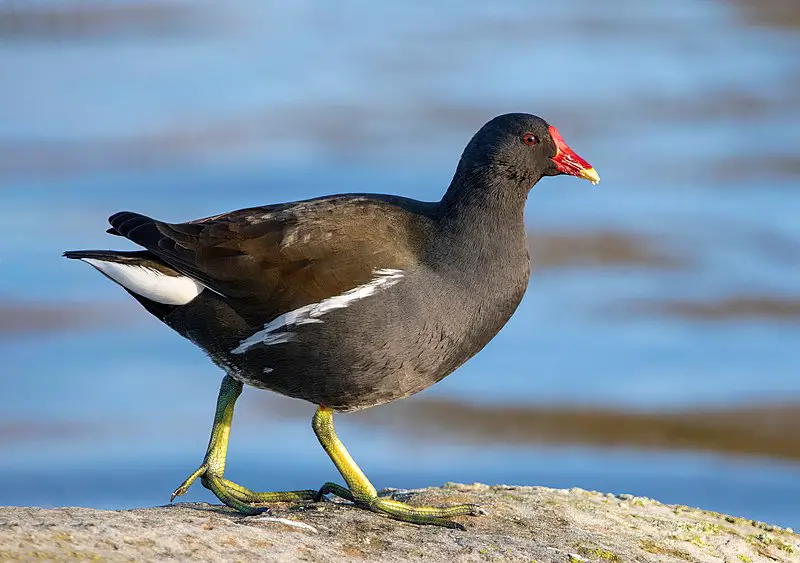
The common moorhen, also called waterhen or swamp chicken, belongs to the rail family and is widespread across various regions of the Old World.
These birds prefer to inhabit wetlands like canals, marshes, and ponds with rich vegetation. They are not found in polar regions or some tropical rainforests.
The species is known for its distinctive red forehead shield, which becomes more prominent during breeding season. Common moorhens usually feed on aquatic plants, small fishes, and invertebrates.
They are excellent swimmers and divers, but are also able to walk on floating vegetation. When threatened, they can flee by diving and swimming underwater.
Overall, common moorhens are fascinating birds that add to the diversity of wetland ecosystems.Scientific classification:
| Kingdom | Animalia |
| Phylum | Chordata |
| Class | Aves |
| Order | Gruiformes |
| Family | Rallidae |
| Genus | Gallinula |
| Species | G. chloropus |
Also Featured In: Birds of Kauai, Hawaii, Wetlands Birds You Should Know
21. Eurasian Wigeon
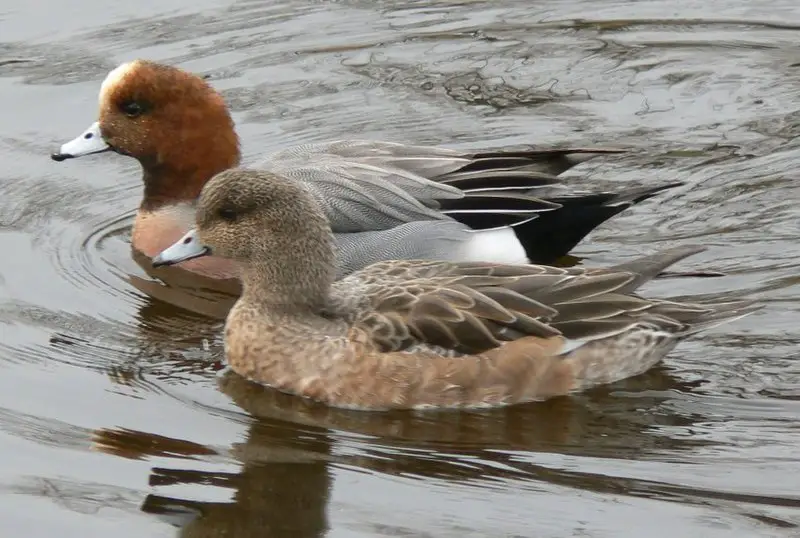
The Eurasian wigeon, also known as the widgeon, is a dabbling duck found throughout its Palearctic range. This species belongs to the genus Mareca and is one of three species of wigeons.
Carl Linnaeus described the Eurasian wigeon in 1758 under the binomial name Anas penelope. This bird is common and widespread across its range.
The Eurasian wigeon is a beautiful bird with a distinctive yellow forecrown, pink breast, and gray-blue beak, and is known for its whistling call.
They are often found in wetlands, where they feed on aquatic plants and invertebrates. The male has a striking breeding plumage, with a chestnut head and neck, gray body, and black-and-white wings.
The female is less colorful, with a brown head and a mottled brown body. This bird is important for both its ecological and cultural value.Scientific classification:
| Kingdom | Animalia |
| Phylum | Chordata |
| Class | Aves |
| Order | Anseriformes |
| Family | Anatidae |
| Genus | Mareca |
| Species | M. penelope |
Also Featured In: Birds that Commonly Found in Pond , Common Snow Birds You Need to Know
22. Bull-Headed Shrike
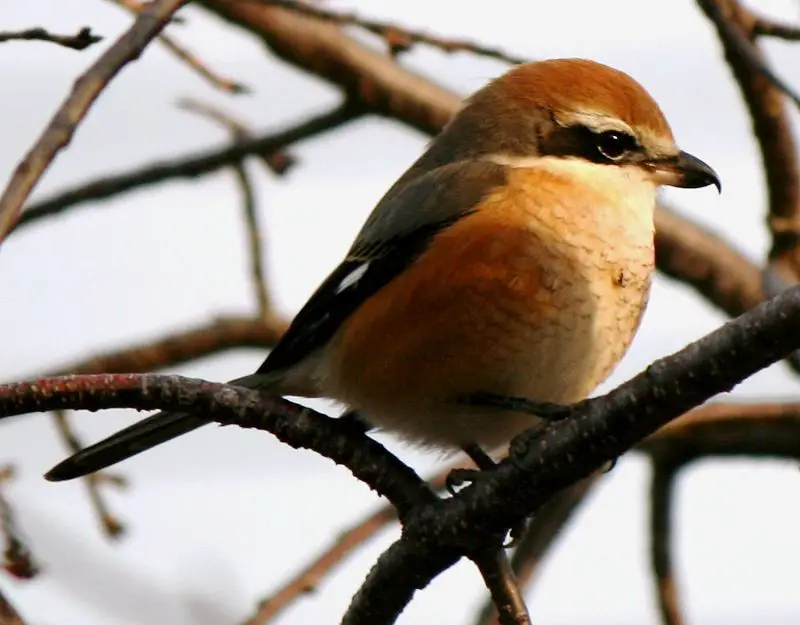
The Bull-headed shrike is a bird that can be found in eastern Asia. It belongs to the shrike family, Laniidae. It is about 19-20 cm long and the male has a brown crown, a white eyebrow, and a black mask.
The back of the Bull-headed shrike is grey-brown, while the wings are dark with a white patch.
Its flanks have a rufous color, and the rest of the underparts are whitish with fine barring. Female Bull-headed shrikes look similar to the males.Scientific classification:
| Kingdom | Animalia |
| Phylum | Chordata |
| Class | Aves |
| Order | Passeriformes |
| Family | Laniidae |
| Genus | Lanius |
| Species | L. bucephalus |
Also Featured In: Most Common Fukuoka Birds, Birds Commonly Found in Kyoto
23. Azure-Winged Magpie
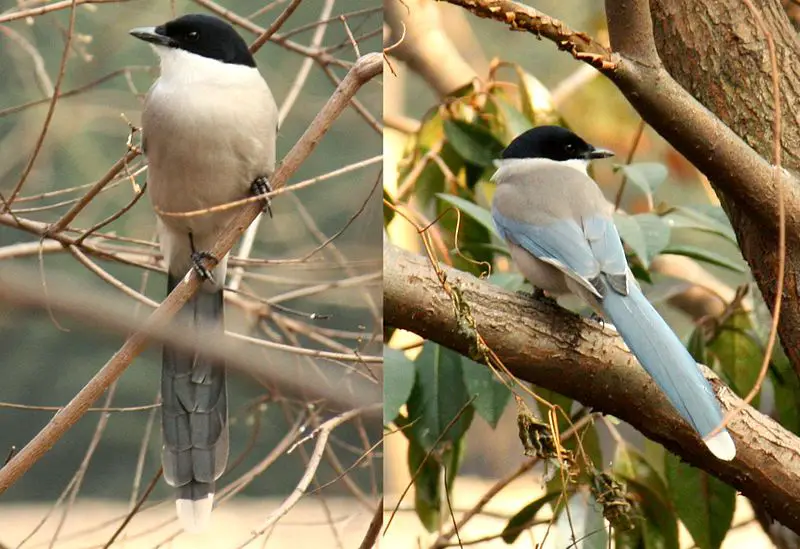
The Azure-winged magpie is a member of the crow family, with a sleek and slender body measuring 31-35cm in length. It closely resembles the Eurasian magpie but has smaller legs and bill.
This bird sports a distinctive black head and a white throat, and its back and underparts are a light grey-fawn hue. Its wings and feathers are iridescent, displaying a range of blues and greens.
The Azure-winged magpie belongs to the genus Cyanopica and can be found throughout Europe and Asia. These birds are highly social and often form sizeable flocks, sometimes numbering in the hundreds.
They are intelligent and have been known to mimic other birds and even imitate human speech.Scientific classification:
| Kingdom | Animalia |
| Phylum | Chordata |
| Class | Aves |
| Order | Passeriformes |
| Family | Corvidae |
| Genus | Cyanopica |
| Species | C. cyanus |
24. Eastern Buzzard
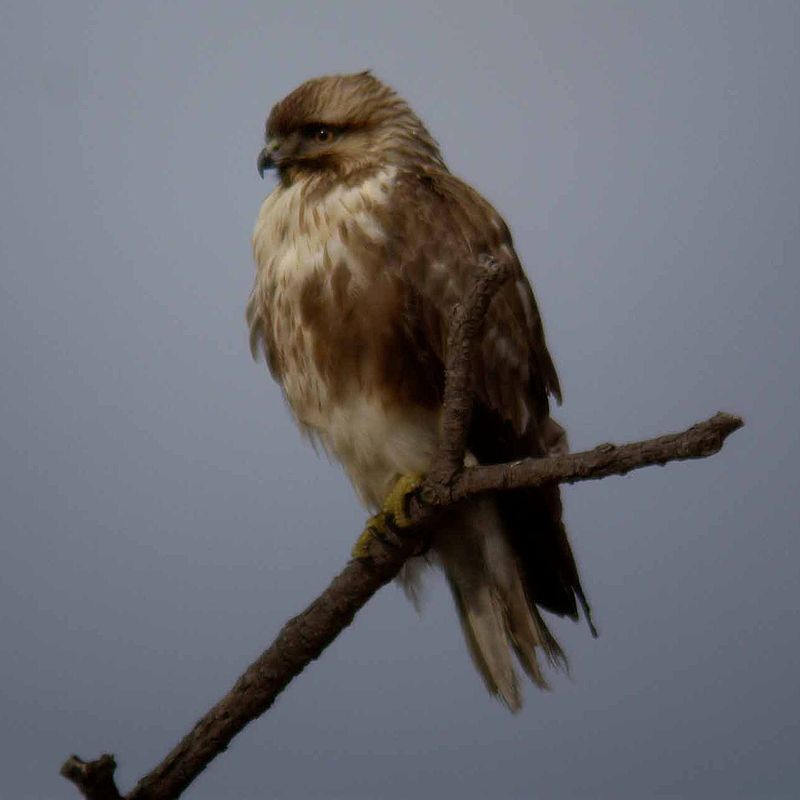
The eastern buzzard, also called the Japanese buzzard, is a medium to large bird of prey. It is sometimes considered a subspecies of the common buzzard, but some scientists argue it is a distinct species.
The bird is native to Mongolia, China, Japan, and some offshore islands. Its appearance is similar to other buzzards, with brown feathers and a hooked beak.
The eastern buzzard is known to be a skilled hunter, feeding on small mammals, birds, and reptiles.
It can often be seen soaring high in the sky, searching for prey. Its habitat consists of open fields, woodlands, and mountainous regions.
Despite its name, the eastern buzzard isn’t only found in the east. Its range also extends to parts of Russia, Korea, and Taiwan.Scientific classification:
| Kingdom | Animalia |
| Phylum | Chordata |
| Class | Aves |
| Order | Accipitriformes |
| Family | Accipitridae |
| Genus | Buteo |
| Species | B. japonicus |
Also Featured In: Common Birds of Sapporo,
25. Eastern Spot-Billed Duck
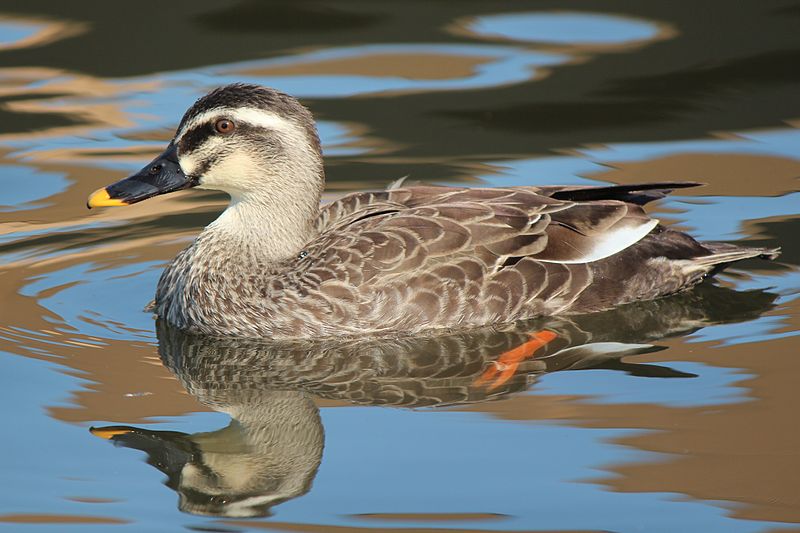
The Eastern Spot-Billed Duck is a dabbling bird that is found in East and Southeast Asia. It was once considered a subspecies of the Indian Spot-Billed Duck, but is now recognized as a separate species.
The name of the bird comes from the yellow spot on its bill. This bird breeds in various areas across its range and is known for its distinctive plumage, which includes a subtle blend of brown, gray, and white feathers.
The Eastern Spot-Billed Duck is a common sight in many wetland habitats and can often be seen swimming in small flocks.
This duck species has a characteristic quacking sound, and it feeds mainly on small aquatic plants, mollusks, and invertebrates.
Overall, the Eastern Spot-Billed Duck is an interesting and unique bird that is worth observing in the wild.Scientific classification:
| Kingdom | Animalia |
| Phylum | Chordata |
| Class | Aves |
| Order | Anseriformes |
| Family | Anatidae |
| Genus | Anas |
| Species | A. zonorhyncha |
Also Featured In: Common Birds of Itsukushima,
26. Japanese Tit
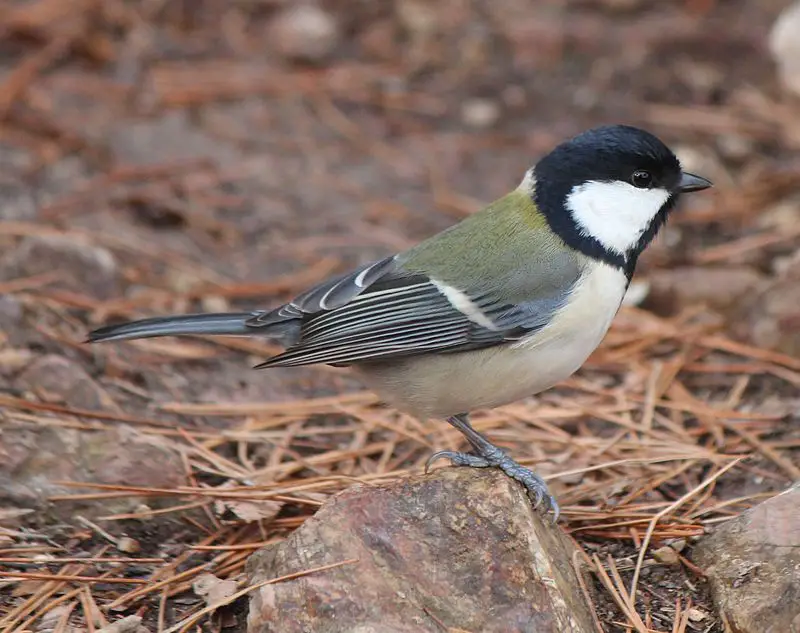
The Japanese tit, scientifically known as Parus minor, is a small passerine bird. It is commonly found in Japan and the Russian Far East beyond the Amur River.
Originally believed to be a subspecies of the great tit, further studies revealed that the two species coexist in the region without interbreeding or mixing.
Also known as the Oriental tit, this feathered creature is known for its striking black and white plumage, contrasting colors, and a small beak.
Its diet consists of insects, seeds, and suet, and it is known to forage actively in trees or on the ground. With a weight of only 8-10 grams, the Japanese tit is considered among the smallest bird species.
Despite its size, it is a vocal bird that produces clear whistles, trills, and calls. The Japanese tit is a common sight in parks, gardens, and wooded areas of its range.Scientific classification:
| Kingdom | Animalia |
| Phylum | Chordata |
| Class | Aves |
| Order | Passeriformes |
| Family | Paridae |
| Genus | Parus |
| Species | P. minor |
Also Featured In: Birds You’ll Find in Hokkaido,